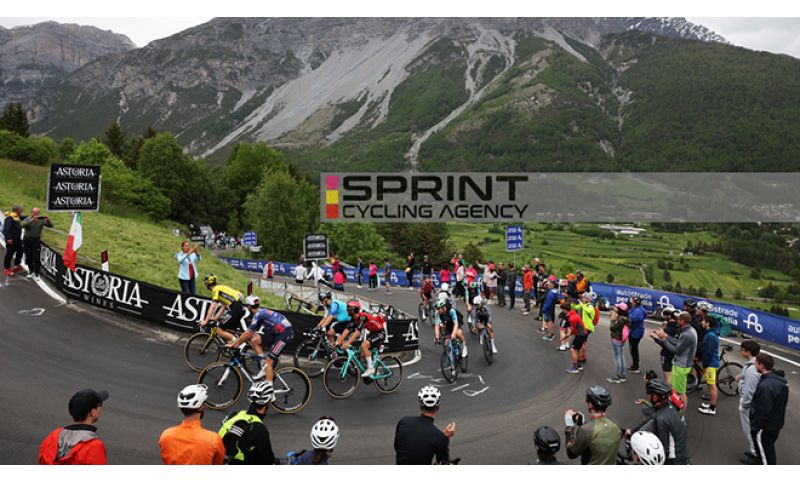

From May 13th, with the new art. 9 of the Highway Code, clearances previously required for issuing authorizations for road cycling races have been abolished. A necessary simplification act to give the issuing procedures more contained and compatible times with organizers' needs, which however has agitated Regions, Provinces, and Municipalities, whose officials have begun to question how to issue an authorization without those comforting elements that were precisely the clearances, confirming that the road is truly passable and that no road intervention is planned in the short term. Concerns to which, whether exaggerated or not, it is appropriate to provide answers, offer proper clarifications, before proceeding too haphazardly, with questionable alternative solutions, until uncertainties mount that could make a positive law perceived as its exact opposite. For which, those who wanted the modification and the FCI will be able to provide their specific and authoritative contribution.
From the initiatives observed and the remarks gathered, there is an impression that a sort of storm in a teacup is being created, rather unjustified for those who want to approach the matter with competence and a constructive approach. Without prejudice to the freedom of criticism and respect for different options that should be brought to light, including through moments of adequate examination and confrontation.
In this context, without presumption but with the experience of similar situations, the solution I feel like suggesting is to work on an application scheme of the new art. 9 based on three very simple points:
1 - the authorization request submitted to the entity responsible for issuing (Region, Province, Municipality) must, always via certified mail, be sent for knowledge and simultaneously also to the owners of the roads involved in the race route;
2 - if there are motivated reasons for impediment to transit on some sections of the race route, the respective road owners must promptly communicate this to the authorizing entity, or within the 15th day from the submission of the application in the case of Region or Province and the 7th day in the case of the Mayor.
3 - after such terms, the absence of communication from the road owners is understood as "tacit consent", according to the spirit of Law No. 241 of 7.8.1990.
This procedural scheme would put the authorizing entities in a position to proceed with issuing their respective authorizations without the concern (or fear of responsibility) of having acted without certainty that the route proposed by the organizers is actually passable or not impeded by road interventions that the road owners might have planned to execute. While for any other extraordinary and unforeseeable circumstance, the tasks and duties that road owners have under art. 14 of the Highway Code apply, as it has always been.
A simple scheme, also protective if desired, whose certainty of effectiveness and formal application will necessarily have to pass (this is the keystone) through memoranda of understanding that the interested parties (FCI, Provinces, Prefectures, Municipalities, etc.) will have to sign at least at the level of each individual province, preferably in a regional, or even inter-regional framework.
Agreements that, once signed, would still leave the authorizing entities, in seeking their further confirmations, the faculty to notify the road owners of their commitment to promptly communicate any transit impediments. Provided this is done autonomously and without obligations and/or with acts of substitution that in some way would harm the simplification will that the legislator wanted to affirm precisely with the modification of art. 9 of the Highway Code. Which, as is known, is also reinforced by having established, as a premise, that sports competitions on public roads "are permitted within the limits and under the conditions provided by law" and no longer as yesterday "forbidden except by authorization". Which is not a philosophical difference, but a precise will of direction even on the bureaucratic and administrative level.
Connected to this, it is normal to think of an increasing professionalism and scrupulousness that organizers and race directors will have to adopt in route selection, the actual site inspection remains fundamental for their suitability, but it is equally true that federal training courses are able to provide the necessary support, as they have always done in the search for maximum possible safety.
Different and much clearer is what the new art. 9 has produced regarding issuing ordinances for temporary traffic suspension during the transit of cycling races, establishing that prefects are now competent for the entire route when the competition involves multiple municipalities and the mayor in the case the race involves the territory of a single municipality. And when it says "the territory of a single municipality", the mayor's faculty is extended to any road regardless of the road owner and without any distinction between inhabited center and extra-urban section. And this regardless of any inconsistencies with other parts of the Highway Code that some might observe.
Ultimately, there are no shortage of solutions and skills to ferry procedures from the old to the new framework. At this point, what is needed is not to waste time. And an important contribution can come from those FCI Regional Committees ready to start a confrontation with their respective Regions.

